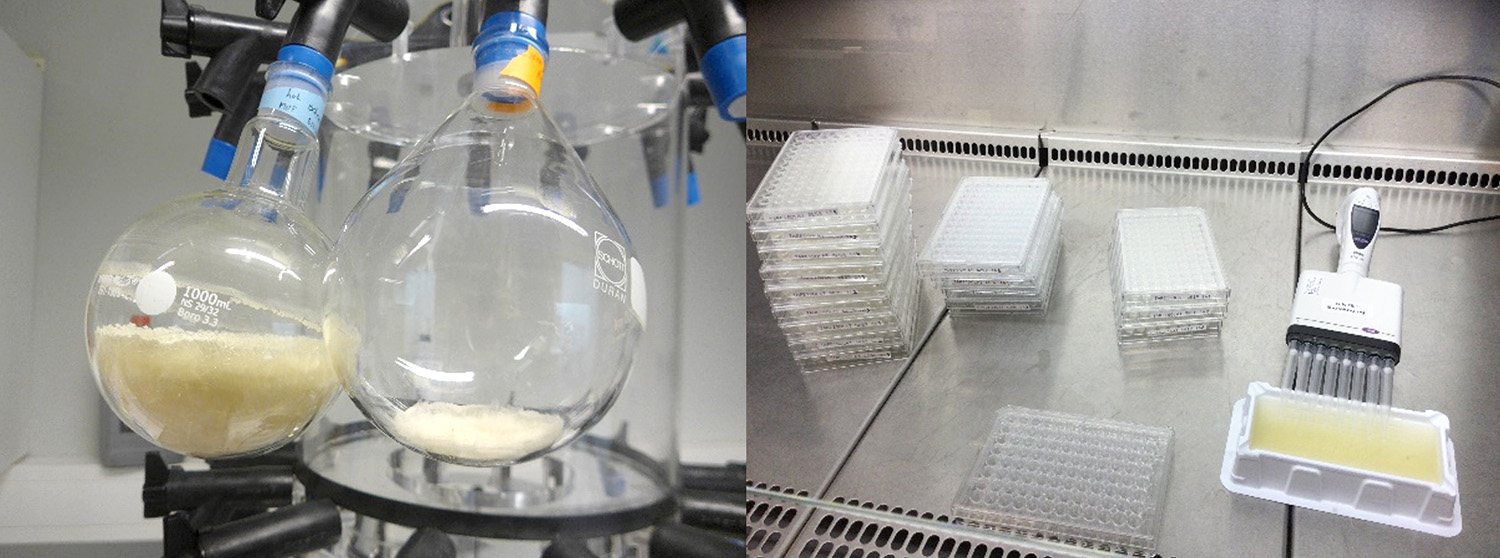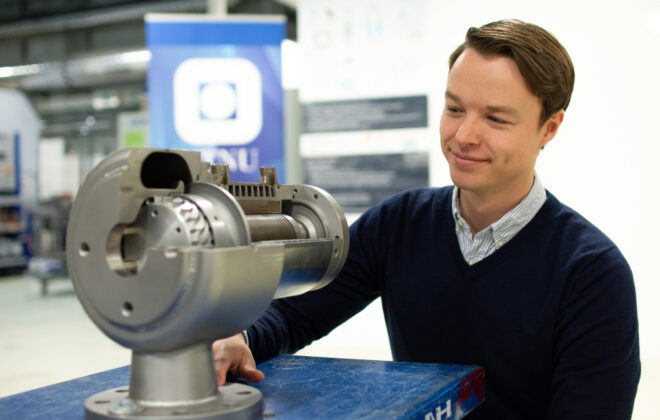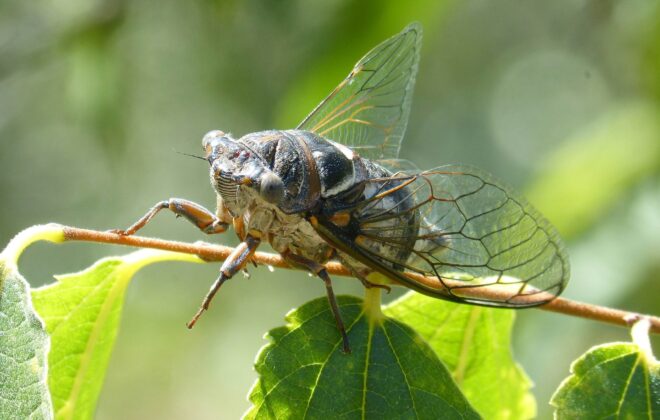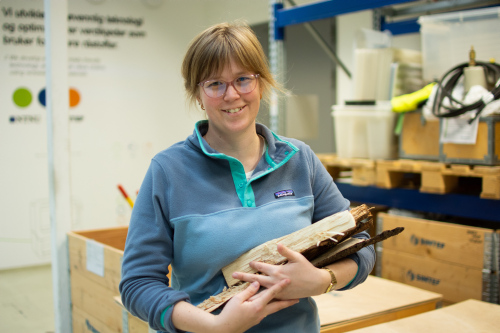Fucoidan – The brown seaweed joker
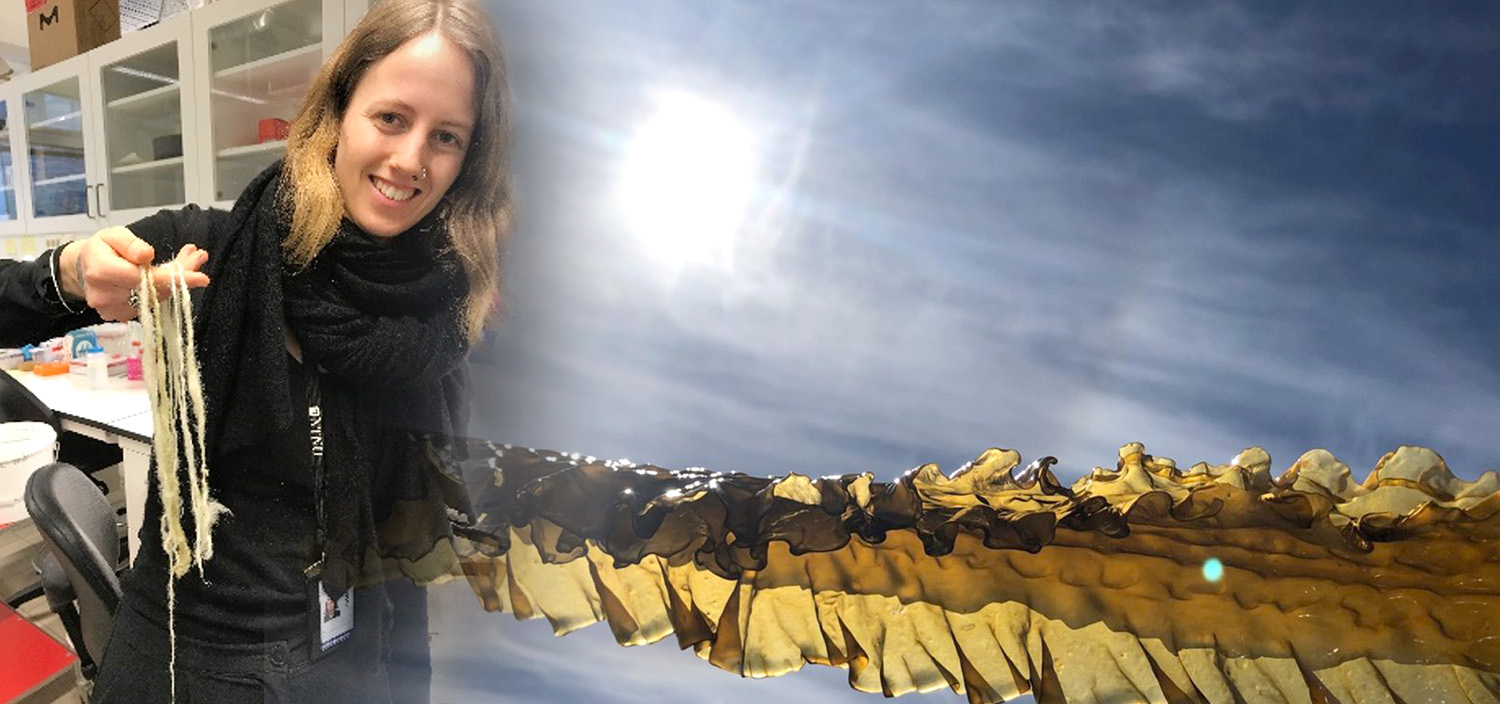
Norway’s coastline stretches over 100 000 km, and along it grows massive amounts of brown seaweed, without a need for any agricultural land, fertilizers, or resources other than our ocean. What can we use it for? And more importantly, can we use all of it? When exploring the components of brown seaweed we find poorly understood carbohydrates, with good potential for pharmaceutical and medicinal applications due to their high bioactivities. The most important one: fucoidan.
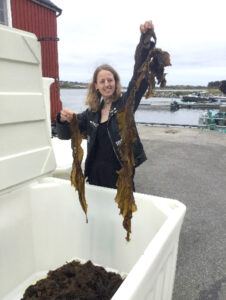 The Norwegian Seaweed Biorefinery Platform (SBP-N) is a five-year project with multiple partners in academia and industry all over the country. We research all aspects with seaweed. Many work on seaweed cultivation, storage and biomass quality, and others on finding new ways of incorporating seaweed in our diet. At the Institute for Biotechnology and Food Science, we mainly work on processing and characterizing polysaccharides from Norwegian brown seaweeds Saccharina latissima (“sukkertare”), Alaria esculenta (“butare”) and Laminaria hyperborea (“stortare”).
The Norwegian Seaweed Biorefinery Platform (SBP-N) is a five-year project with multiple partners in academia and industry all over the country. We research all aspects with seaweed. Many work on seaweed cultivation, storage and biomass quality, and others on finding new ways of incorporating seaweed in our diet. At the Institute for Biotechnology and Food Science, we mainly work on processing and characterizing polysaccharides from Norwegian brown seaweeds Saccharina latissima (“sukkertare”), Alaria esculenta (“butare”) and Laminaria hyperborea (“stortare”).
When I tell people outside of my academic circle that I work with seaweed, they mostly assume I talk about new sustainable food options. Some immediately start relating to growing and harvesting seaweed, or ask if we are developing new types of sushi. Almost none relate to the carbohydrates within seaweed and the many products that contain them. Nobody at all knows what fucoidan is.
What even is fucoidan and why research it?
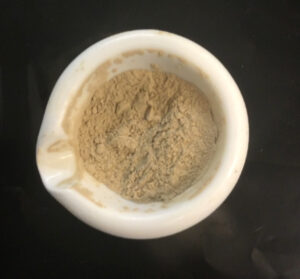 One of the important aspects of developing a sustainable and economically feasible seaweed industry, is to gain knowledge on what could become high value products. Offering whole seaweed on its own is not enough to survive on a growing market of bio-based products.
One of the important aspects of developing a sustainable and economically feasible seaweed industry, is to gain knowledge on what could become high value products. Offering whole seaweed on its own is not enough to survive on a growing market of bio-based products.
Fucoidan is present in all brown seaweeds, but only makes up about 5% of the total carbohydrates. It is what we call a fucose-containing, sulfated polysaccharide, which is high in bioactivity especially due to its sulfate groups. Unlike cellulose, fucoidan is not simply built by repeating glucose sugar units. It can vary greatly in sugar composition, although fucose is a key component, and it differs in buildup based on linkage type, side chains and substitution groups. All these factors result in a very difficult polysaccharide to map with regards to full chemical structure.
At the same time, ongoing research show that its different composition fragments amount to different types of biological activity. This may be antioxidant, anticoagulant, antiviral, immunostimulant and antibacterial properties – all of which are highly valuable in the future development of new drugs. For this reason alone, we are dependent on developing protocols that help us better understand and characterize fucoidan.
The role of enzymes in a structure-function relationship
So how can we go about characterizing fucoidan? A helpful tool to both cut fucoidan into specific, lower molecular weight fragments, and to tell us exactly how the fragments are linked together, is enzymes. Therefore, a large portion of my PhD focuses on fucoidan active enzymes. Enzymes that can degrade fucoidan are so far poorly characterized. Understanding the structure of fucoidan and thus its bioactivity relates highly to understanding fucoidan degrading enzymes. On top of this, enzymes can be used repeatedly, eliminating the need for stronger chemicals that might also destroy the fucoidan if degrading it, and we can in theory construct the perfect combination of degrading enzymes for each type of fucoidan.
In my PhD, I am starting to research such novel enzymes. Endolytic enzymes are especially of interest because they cleave the long, complex fucoidan chains in the middle and directly generate smaller fragments of the entire fucoidan molecule. They can tell us, together with linkage analysis of the fucoidan sample, exactly what type of glycosidic linkages the fucoidan is constructed by. Carbon 1 linked to carbon 4? 1 to 3? Any side chains linked to carbon 6 perhaps? In this way, we also establish how each enzyme acts. Furthermore, since enzymes often are highly specialized in their mode of action, some might specifically cleave off only fragments with certain sulfate group positions. Because of the already indicated link between sulfate groups and biological activity, this information can be of great value.
Characterizing enzymes with the help of fucoidan as a substrate, and the other way around, gives us unique insight into this new joker of a polysaccharide in the brown seaweeds. When we have well-characterized fucoidan, we are one big step further on the way to assay the biological activity and test its applications.
More about me
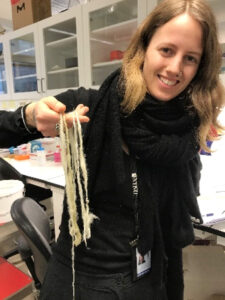 I have a master’s degree in biochemistry from NMBU in Ås, where I wrote about enzymatic saccharification of the Norwegian brown seaweed Saccharina latissima. I am now in my second PhD year in the Biopolymer NMR group at IBT, with the supervision of Professor Finn L. Aachmann. Apart from the PhD work I am passionate about outreach events focused on brown seaweed applications, and I’m also the NTNU ambassador for BioCat, the national research school on biocatalysis.
I have a master’s degree in biochemistry from NMBU in Ås, where I wrote about enzymatic saccharification of the Norwegian brown seaweed Saccharina latissima. I am now in my second PhD year in the Biopolymer NMR group at IBT, with the supervision of Professor Finn L. Aachmann. Apart from the PhD work I am passionate about outreach events focused on brown seaweed applications, and I’m also the NTNU ambassador for BioCat, the national research school on biocatalysis.

Maren Oftebro
Maren Oftebro is a PhD candidate at the Department of Biotechnology and Food Science. She is a member of the Biopolymers and Biomaterials division.
Tags In
Search
Søk
Categories
- Arctic Research
- Arkitektur
- Bærekraft
- Bioingeniørfag
- Biologi
- Biology
- Biomedical Laboratory Science
- Biotechnology
- Bioteknologi
- Chemical Engineering
- Chemistry
- Climate
- Computer Science
- Datateknologi
- Digital
- Elektronikk
- Energi
- Energi
- Energy
- Engineering
- Engineering
- Environment
- Food Science
- Forskning
- Fysikk
- Fysikk
- Havbruk
- Informasjonsteknologi
- Informasjonsteknologi
- Ingeniørvitenskap
- Kjemi
- Kjemisk prosessteknologi
- Kjemisk prosessteknologi
- Kreftbehandling
- Kybernetikk
- Marine Technology
- Materialer
- Materials Science
- Materialteknologi
- Matvitenskap
- Meninger
- Miljø
- Min ph.d.
- My PhD
- My PhD
- My postdoc
- Nanotechnology
- Nanoteknologi
- Ocean
- Oil and gas
- Physics
- Research
- Simulering og visualisering
- Spør en forsker
- Studentliv
- Sustainability
- Ukategorisert
- Universitetsliv
- University Life
Kategorier
- Arctic Research
- Arkitektur
- Bærekraft
- Bioingeniørfag
- Biologi
- Biology
- Biomedical Laboratory Science
- Biotechnology
- Bioteknologi
- Chemical Engineering
- Chemistry
- Climate
- Computer Science
- Datateknologi
- Digital
- Elektronikk
- Energi
- Energi
- Energy
- Engineering
- Engineering
- Environment
- Food Science
- Forskning
- Fysikk
- Fysikk
- Havbruk
- Informasjonsteknologi
- Informasjonsteknologi
- Ingeniørvitenskap
- Kjemi
- Kjemisk prosessteknologi
- Kjemisk prosessteknologi
- Kreftbehandling
- Kybernetikk
- Marine Technology
- Materialer
- Materials Science
- Materialteknologi
- Matvitenskap
- Meninger
- Miljø
- Min ph.d.
- My PhD
- My PhD
- My postdoc
- Nanotechnology
- Nanoteknologi
- Ocean
- Oil and gas
- Physics
- Research
- Simulering og visualisering
- Spør en forsker
- Studentliv
- Sustainability
- Ukategorisert
- Universitetsliv
- University Life

